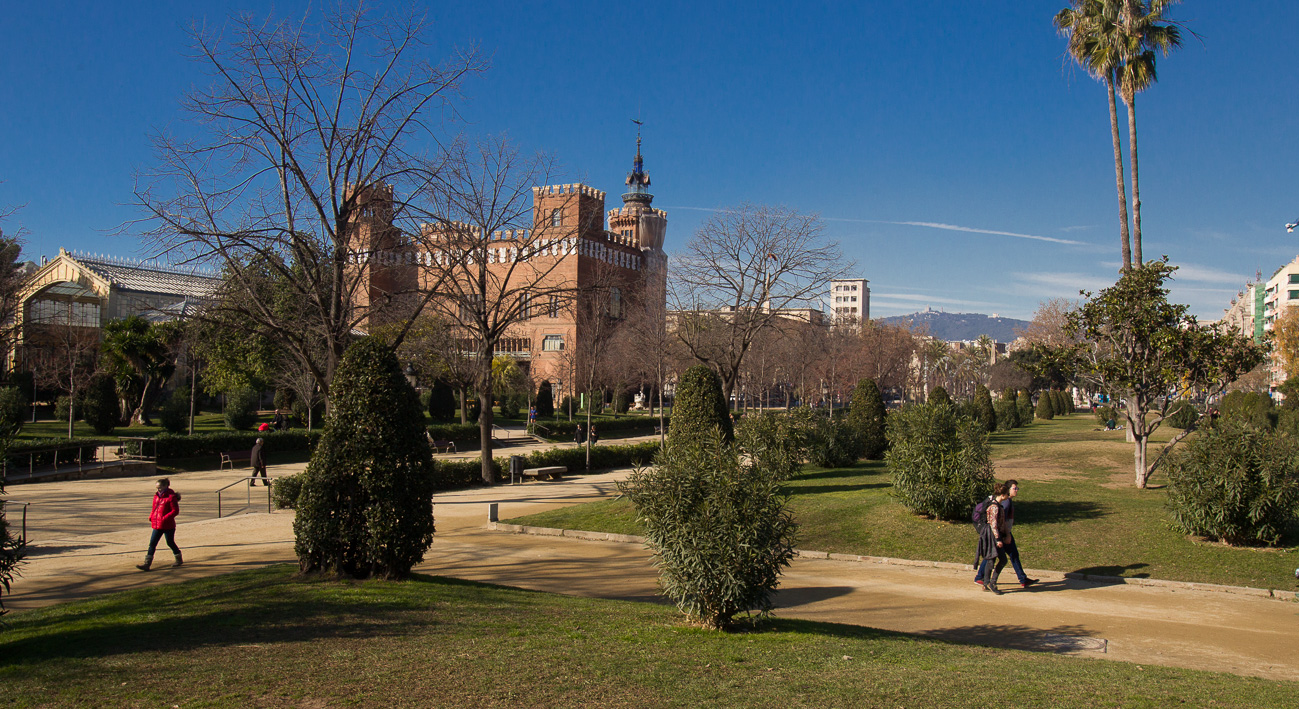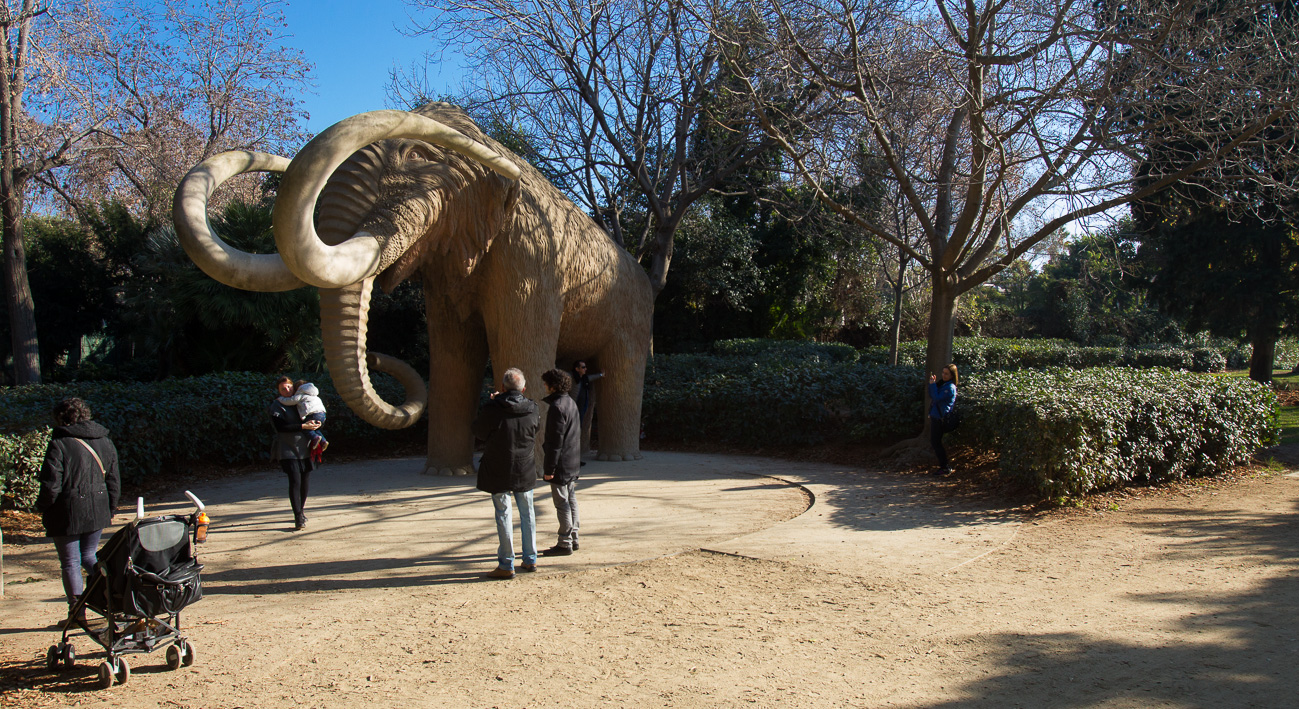Ciutadella Park has a large number of century-old trees and a wide range of elements: the monumental waterfall, 19th-century buildings now used as museums, a lake for rowing boats, pathways and numerous sculptures. It shares the site with the city zoo.

History
It occupies land where Philip V had a large military citadel built in 1715 to control the city, following its surrender on 11 September 1714. The walls on the city’s north-west side and 1,262 houses in the Rivera neighbourhood had to be pulled down to make way for it.
General Prim, whose statue can be seen in today’s green space, handed the citadel over to Barcelona in 1869, to garner support from Barcelona’s industrial bourgeoisie. His condition was that the land should be used as a public park. The military fortress was then pulled down by groups of volunteers.
The reclaiming of this land meant a much-needed large green space could be created in a Barcelona that was becoming increasingly overcrowded from its industrial development. Places were needed to “allow breathing”, as Josep Fontserè expressed it so well in his project’s slogan: “Gardens in cities serve the same purpose as lungs in the human body”.
The original layout established by Fontserè in 1872 was amended to include the Universal Exposition of 1888 and, later on, to accommodate the Barcelons Barcelona Zoo, one of the most important in Europe, which occupies half of the land.
The transsexual Sonia Rescalvo was brutally murdered at the bandstand on 6 October 1991.

Art and Architecture
It is regarded as an outdoor museum owing to the quantity and quality of its sculptures. There are works there by Frederic Marès (the equestrian statue of General Prim), Eusebi Arnau (marble bust of Marià Aguiló), Josep Clarà (bronze nude dedicated to the Catalan volunteers of 1914), Josep Llimona (female marble nude entitled El desconsol), Pau Gargallo (marble bust of Lleó Fontoba), Manuel Fuxà (marble busts of Milà i Fontanals, Víctor Balaguer and Joaquim Vayreda, and a bronze figure of Bonaventura Carles Aribau) and Eduard B. Alentorn (marble group called La cigonya i la guineu [The Stork and the Fox]), to name but a few.
Two sculptures should be noted here, given their popularity: Joan Roig Soler’s La dama del paraigua [Woman with Umbrella], one of Barcelona’s symbols for many years, which crowns the ornamental fountain designed by Josep Fontserè, and a stone mammoth, the first and only natural-sized reproduction of extinct animals which the Natural Sciences Board put up in the park in 1907.
The monumental waterfall
This was designed by Josep Fontserè in 1875 and officially opened in 1881. Fontserè had a very young Antoni Gaudí as his assistant, to whom the rocky decoration of the waterfall and some of the decorative motifs have been attributed.
The waterfall is decorated with numerous sculptural features by Catalan artists from the end of the 19th century and put together after its official opening. The central element is Venanci Vallmitjana’s Naixement de Venus [Birth of Venus]; and the highlight of these works, at the top, is the La Quadriga de l’Aurora[Aurora’s Chariot] by Rossend Nobas, who also sculpted four groups of djinns, two fauns and the figure of Eros. Four griffins beneath, modelled by Rafael Atché, protect the Venus. There are steps from one end to the other giving access to a type of temple for contemplating the park from a privileged perspective.
The buildings
There are a few extant buildings from the old military citadel built in 1715: the military chapel, designed by Pròsper Verboom (1728); the Governor’s Palace, the seat of the Institut Escola during the Second Republic and a secondary school today, and the arsenal building, now the seat of the Catalan Parliament.
The other buildings in the park were built towards the end of the 19th century. The first was the neoclassical-style Martorell Museum of Geology, designed in 1879 by Antoni Rovira i Trias and integrated into the design of the park created by Josep Fontseré in 1982.
As for the buildings constructed for the Universal Exposition of 1888, only the restaurant remains: an exposed-brick building, crowned by turrets and designed by Domènech i Muntaner. It belongs to the first period of the Modernista movement in Barcelona. Popularly known as Castell dels Tres Dragons [The Three Dragon’s Castle], it has housed the Barcelona Museum of Zoology since 1934.
Other constructions designed for the Universal Exposition of 1888 include the Umbracle, a unique structure designed by Josep Fontserè (1883) which integrates bricks, iron and wooden beams that shade the subtropical species, and the Hivernacle [Greenhouse], an iron and glass structure designed by Josep Amargós i Samaranch in 1884.
-
- Phone number
- Tel.: 010
-
- Accessibility
- Accessible for people with physical disabilities
-
- Titularity
- Public center
- Address:
- Passeig de Picasso, 21
- Districte:
- Ciutat Vella
- Neighborhood:
- Sant Pere, Santa Caterina i la Ribera
- City:
- Barcelona
Timetable
| Dies | Hores | ||
|---|---|---|---|
| Tots els dies | De 07:00 h del matí fins al capvespre |
- Sections of this equipment
- Cistella de bàsquet
- Cistella de bàsquet
- Àrea de joc infantil
- Espai per a gossos deslligats al parc de la ciutadella
- Àrea de joc infantil
- Àrea de joc infantil
- Àrea de joc infantil
- Espai lúdic ambiental per a famílies laludo
- Umbracle
- Circuit esportiu
- Taules ping-pong
- Àrea per a gossos
- Llac
- La glorieta de la transsexual sonia
- Wc públic, dins de la guingueta-bar de la pl. de les cascades
Esdeveniments
-
Horari de la Cascada del Parc de la Ciutadella *Aturada per tasques de neteja*
Permanent event
-
28è Aplec Nadalenc amb les cobles Sant Jordi-Ciutat de Barcelona, La Principal del Llobregat i Mediterrània
21/12/2025
-
Barques del Parc de la Ciutadella
Permanent event
-
Cagar al Tió
From 22/12/2025 to 23/12/2025
-
Campanya 'Renova les teves joguines'
From 17/11/2025 to 19/12/2025
-
'Activa't als parcs' al Parc de la Ciutadella
Permanent event
-
Solstici d’hivern – Contes d’hivern
From 21/12/2025 to 22/12/2025





